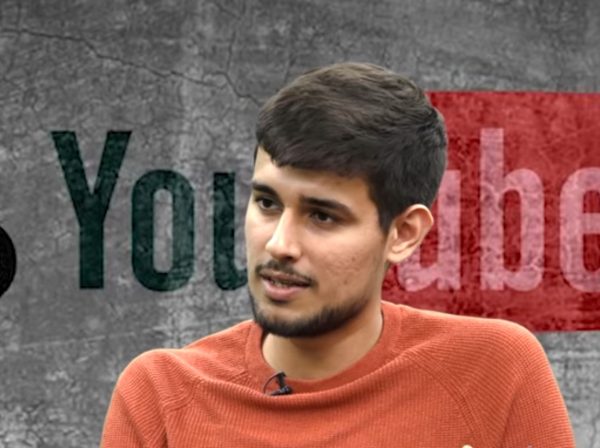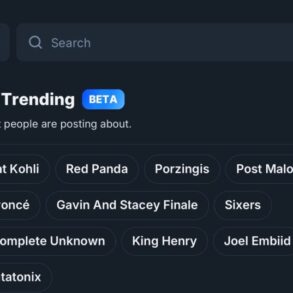
A week ago, @TheRantingGola posted a 1:28 minute video clip, titled, “A few reasons why you need to start talking about your own issues and problems!!,” with the hashtag ‘#NafratNahiNaukri, meaning “not hate but jobs.” The clip went viral, garnering 22,000 likes on X, formerly Twitter.
@TheRantingGola is Shamita Yadav, a 23-year-old national-level tennis player. She describes herself as a “Comedian,” “fighting fascist jokers with comedy.”
Delivered in a breathless 88-second monologue, @TheRanting Gola’s video lists zillions of burning issues that Prime Minister Narendra Modi should address but chooses to divert attention away from. Amid this election season, she urges people to ask their government questions on things that matter — unemployment, rising prices, unaffordable healthcare, and burgeoning inequality.
The fourth pillar of democracy, the media, and especially the mainstream news media and press, is so compromised in India today that critics have labeled it the “godi media” (lapdog media). Incidentally, a pliant media refusing to hold the government to account has coincided with an increase in government crackdowns on journalists and news organizations that it perceives as “anti-national.”
With mainstream leaders operating as cheerleaders of the Modi regime, social media creators have stepped up to fill in the vacuum. Their critical and incisive online political commentary is presented as satirical comedy, catchy songs, and engaging videos. Their content has created far more awareness about the excesses of the Bharatiya Janata Party (BJP) government than that generated by political parties.
Generative artificial intelligence trainer Moitreyo Bhattacharya prefers to watch political satire by comedians instead of news portals to update himself on news. “In any case, reality has turned bizarre,” he told The Diplomat. “So, who better than comedians to put it into perspective.”
Significantly, all these social media creators are independent citizens — full-time college lecturers, medal-winning sportspersons, and YouTubers.
Several of these political satirists are fearless young women, unhesitating in speaking truth to power. One of the first to use sharp satire to expose the hypocrisy of the Modi regime is “Dr.Medusa” (pseudonym), @ms_medusssa, a full-time English professor who donned the persona of “Neighborhood English teacher.” Her incisive scripting is her strength, amply evident in the fictitious “NTPC Helpline” where she advises Hindutva trolls on countering incontrovertible facts with propaganda. Also popular is her satirical portrayal of outrageous national news headlines “Dukhdarshan” (sad news) delivered in the poker face style of Doordarshan, the national government-run broadcaster’s newsreaders.
Their fierce outspokenness has not escaped the notice of the authorities and often lands these satirists in trouble. Singer Neha Singh Rathore, who composes political satire in her native Bhojpuri language (a regional dialect of Hindi spoken in eastern Uttar Pradesh) was served notice by the Bharatiya Janata Party (BJP)-ruled Uttar Pradesh state police for her song about the death of a mother and daughter during an eviction drive in the state. Rathore had questioned the functioning of Uttar Pradesh Chief Minister Adityanath’s government. Speaking to the NDTV news channel, an undeterred Rathore said, “I am just a folk singer… The idea is to scare away every voice of dissent or criticism.”
Amid the ongoing campaign for general elections, opposition parties and critics of Modi’s autocratic rule have called on citizens to defend democracy and the Indian Constitution. Echoing this sentiment, journalist Paranjoy Guha Thakurta, a well-known Modi critic, produced a music video titled “Saheb” (Master) highlighting Modi’s dictator-like traits.
The video is like a rousing anthem, and when it went viral, Thakurta translated it into several regional languages including Assamese, Bengali, and Gujarati for greater reach across the country amid the ongoing elections.
Among those whose popularity has skyrocketed this election season is the 29-year-old YouTuber Dhruv Rathee. The Germany-based Rathee’s videos address a range of issues from the Electoral Bond Scheme disclosures to the “Hindu-Muslim brainwash agenda.” Interestingly, his videos are resonating with an otherwise politically disinterested Gen Z.
Rathee’s most viral video till date, “Is India becoming a Dictatorship?” which he released in late February, weeks before the announcement of the Indian election schedule, has garnered 24 million views on YouTube alone.
The 30-minute video examines the state of India’s democracy under Modi, and highlights several problems including the farmers’ protest, the regime’s misuse of central investigative agencies and jailing of its political opponents, and the need to safeguard democratic values in India.
As Delhi University Professor Apoorvanand wrote, Rathee’s videos underscore how dictatorship is taking root in India under the guise of democracy. His appeal lies in his “no holds barred ” unflappable manner. Besides, he explains to his audience difficult concepts and chooses not to pontificate to them.
With his “Dictatorship” video going viral and demand for it to be accessible in different regional languages rising, Rathee has leveraged AI to translate the video into the four south Indian languages as well as in Bengali. His videos are gaining traction with news channels reporting how youngsters are increasingly talking about Rathee’s videos. In fact, Rathee has made it his declared mission to demolish the false propaganda spread through WhatsApp by the BJP Information Technology cell. Labeling it #Mission100Crore (i.e. 1 billion), Rathee has urged 10 million Indians to share his videos with 100 of their WhatsApp contacts daily, thereby enabling it to reach 1 billion Indians.
Inspired by the massive reach and impact of Rathee’s videos, opposition party candidates have started using them in their election campaigns to create awareness about the dangers of Modi returning to power for a third time.
Rathee’s viral videos have raised the hackles of the BJP, which since 2014 stood head and shoulders above its political rivals in its use of new technology and social media. Political satirists and YouTubers like Rathee and Dr.Medusa are now helping break the BJP’s stranglehold over WhatsApp and social media content. They assert that they are not funded by any political party or organization.
If there is one leitmotif that defines Modi’s decade-long rule, it is his government’s determined clamping down and stamping out of any sign of dissent. According to the Internet Freedom Foundation, the IT Rules 2021 enabled “government control rather than regulation” of social media content. Recently, however, the Supreme Court thwarted the government’s attempts to set up a Fact Checking Unit for social media content.
The shrinking of media space for critical anti-establishment views has driven the popularity of these social media content creators. Satirists like Bhagat Ram @bhagatram2020 and Narundar @NarundarM have over 100,000 followers on X.
Amid the silence of the mainstream media on issues of corruption and sex abuse involving ruling party politicians or their alliance partners, social media satirists have spoken up. Sitting parliamentarian Prajwal Revanna, who is a candidate of the Janata Dal-Secular, the BJP’s alliance partner in Karnataka, is accused of making 3,000 sexual assault videos to blackmail his women victims. While mainstream news channels have been conspicuously silent on the issue, social media creators and political satirists have voiced the outrage of ordinary citizens questioning the prime minister and the BJP for fielding Revanna when they were aware that he was accused of being sexual predator.
Whatever the outcome of General Elections 2024, one thing is clear: the credit for politically engaging a cynical and disinterested public should go to political satirists and social media content creators.





